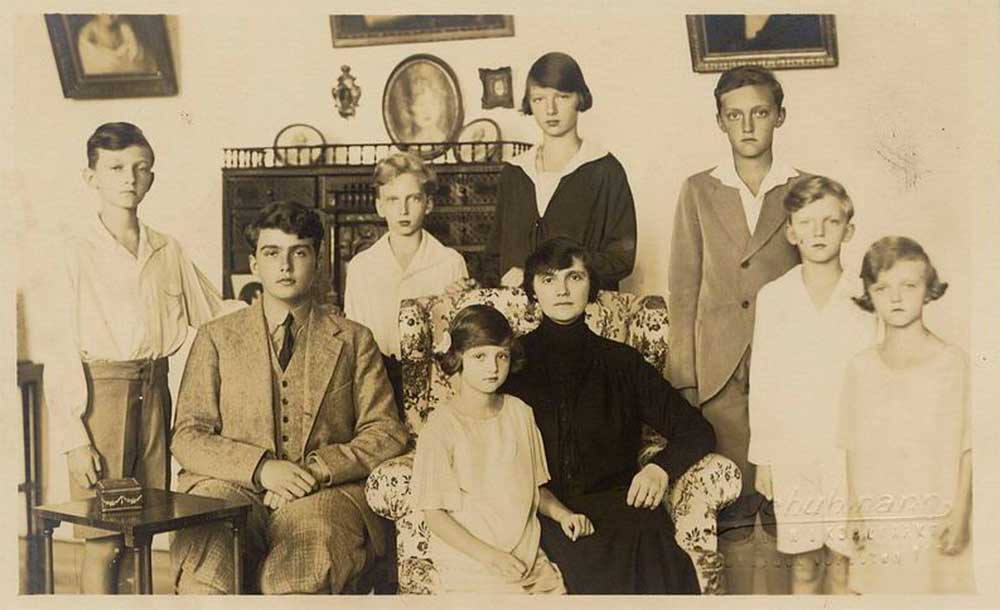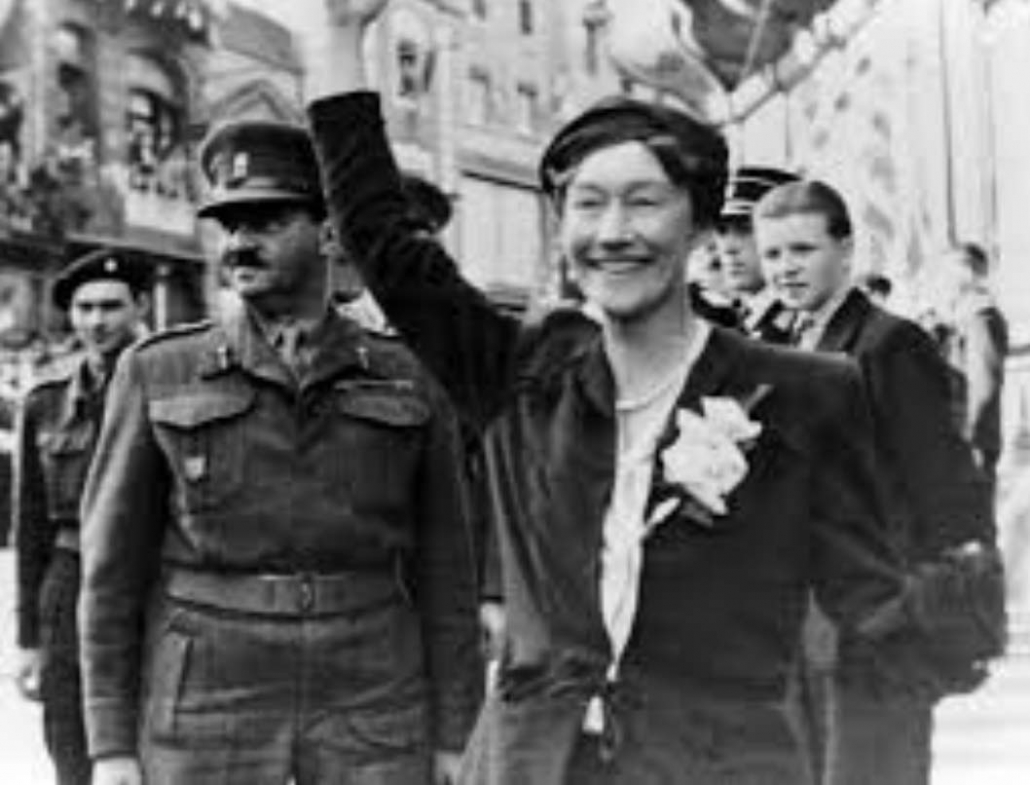The journey of the Luxembourg Grand-Ducale family & of the Habsbourg Imperial family
The château de Montastruc in Périgord has constantly mixed the great and the small history, that of the nations, of the great epics which founded them, and that more local of our valleys of Dordogne and their inhabitants. Traces of it are still visible on the walls of the caves, on the graffiti in the basements and attics. They are almost perceptible as the soul of this great house still vibrates… From the cavities with a Venus sculpted to the rock in the 5th century through to modern times, Montastruc is imbued with the affection that those who stayed there have developed for this site, attaching and remarkable. Here is a relatively recent example:
A forced stop at the Château de Montastruc
On the night of May 9, 1940, the German army violated Luxembourg’s neutrality. The grand-ducal family, exfiltrated by France, left the castle of Berg at the last minute, where they were residing. Their exile path quickly passed through the castle of La Celle-Saint-Cloud from May 11 to 18. Then by the castle of Vieux-Bost in Allier, property of François-Xavier de Bourbon-Parme on the demarcation line. Finally, at the castle of Montastruc in Périgord, under the protection of France which sends there a section of Senegalese skirmishers for its guard.
Local life is then soon organized to the rhythm of the visits that HRH the Grand Duchess Charlotte of Luxembourg, her husband Prince Félix of Bourbon-Parme and their children make in the vicinity of Montastruc.
On June 16, 1940, the last Empress of Austria and Queen of Hungary and Bohemia, Zita, sister of Félix de Bourbon-Parme, joined the couple at the castle. On her way into exile, she finds her brother and passes through Montastruc, accompanied by her 8 children, including her eldest Otto of Habsburg, Archduke of Austria and head of the House of Habsburg-Lorraine.

Zita & her 8 children
One can imagine the touching family scenes in the large living room of Montastruc. While the rest of the house and its gardens shine in the light of June.
They are all waiting there for a visa from Portugal which will allow them to cross Spain and reach Lisbon.
Exile in Portugal
The Portuguese consul stationed in Bordeaux (Aristides de Sousa-Mendes, declared in 1966 “Righteous among the nations”) refused to follow the orders of the Salazar government. Moreover, from mid-June, he issued several thousand visas without distinction people under threat and wishing to flee France.
The Luxembourg and the Habsburgs will obtain this essential visa. This is why the Grand Duchess Charlotte will say of the consul Aristides de Sousa-Mendes:

“His merit, in a time of tragedy and panic, will always be remembered by the Luxembourg refugees and those of my own family, who were saved by his initiative from a certain persecution and were thus able to reach the free countries. His humanitarian action will forever remain exemplary of the self-sacrifice with which he devoted himself to the cause of freedom and understanding of all nations and all races. “
Charlotte of Luxembourg, Grand Duchess
More sadly, illustrating the direct threats against the Grand-Ducal family, the sister of the Grand Duchess, Princess Antonia of Luxembourg, wife of the Royal Prince of Bavaria, was not given the opportunity to go into exile. She was deported to Dachau camp, then to Flossenburg. It is there that she suffered torture, resulting in her death soon after her liberation…
On June 17, the Grand Duchess Charlotte met President Albert Lebrun at the Élysée Palace. But the German victory led the French government to refuse to ensure its security any longer. With the Portuguese visa, she is authorized by the Spanish government to cross the country, with no right to stay to there, to reach Portugal, where her mother was the infant Marie-Anne of Portugal, Princess of Braganza.
The Luxembourg and the Habsburgs are now saved and can leave the chateau de Montastruc in convoy. The two families have spent serene and happy weeks, according to the testimony of Grand Duke Jean himself. As a young man, he had very fond memories of this forced stay in Montastruc.
The fight against German oppression
The Grand Duchess Charlotte will be on August 29 in London where she will lead the Luxembourg resistance from the BBC. We find her in October in the United States, then in November 1940 in Montreal where her children continue their studies. She will meet with US President Franklin D. Roosevelt on several occasions and travel around the United States, trying to convince American citizens to go to war.
From 1943, the Grand Duchess Charlotte will settle permanently in London with the Luxembourg government in exile. She would speak very regularly to her compatriots on the BBC – she would become the symbol of the country’s resistance, returning to Luxembourg on April 14, 1945.

Charlotte of Luxembourg back from exile
Let’s end on a warm note making a virtual visit into the Château de Montastruc.
Find the many videos and photos of the castle by clicking on this link.
Splendid private historic residence, combining grandeur and simplicity, remaining above all a family home, Montastruc can become your haven of peace for a week or more. The castle is offered for seasonal rental, at any time of the year.



